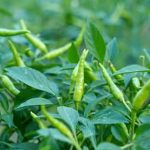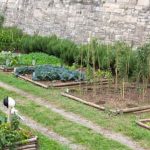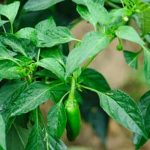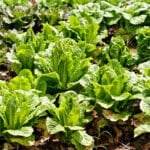Are you interested in starting your own vegetable garden in Oklahoma? Look no further. This article will provide you with a comprehensive vegetables list for Oklahoma gardens, as well as valuable insights on the unique climate and soil of the region. With a focus on the growing season, climate, and essential tips for successful gardening, you’ll be well-equipped to start your own Oklahoma garden.
Oklahoma’s climate and soil present both challenges and opportunities for vegetable gardening. Understanding these factors is crucial for selecting the best vegetables to grow in your garden. By exploring the unique characteristics of Oklahoma’s environment, you can make informed decisions about what to plant and how to care for your crops.
From navigating the growing season to maximizing space with container gardening, this article will cover all aspects of vegetable gardening in Oklahoma. Whether you’re a seasoned gardener or just starting out, these tips and insights will help you make the most of your Oklahoma garden. So let’s dive into the world of vegetable gardening in this vibrant state and discover the possibilities that await.
Best Vegetables for Oklahoma Gardens
Oklahoma is known for its unique climate and soil, which presents both opportunities and challenges for vegetable gardening. Understanding the growing season and climate of Oklahoma is essential for any gardener looking to cultivate a successful vegetable garden in this region.
Growing Season in Oklahoma
The growing season in Oklahoma varies depending on the region, with the eastern part of the state typically experiencing a longer growing season compared to the western part. Generally, the average last frost date ranges from late March to mid-April, while the first frost date occurs between late October to mid-November. This gives Oklahoma gardeners a window of approximately 180-200 days to grow vegetables.
Climate Considerations
Oklahoma’s climate is characterized by hot summers and mild winters, with temperatures often reaching above 90°F during the peak of summer. Additionally, Oklahoma experiences frequent thunderstorms and occasional drought conditions, which can impact vegetable crops. When selecting vegetables for an Oklahoma garden, it’s important to choose varieties that are well-suited to hot weather and have some tolerance to drought.
Best Vegetables for Oklahoma Gardens
When considering what vegetables to grow in an Oklahoma garden, it’s crucial to select varieties that thrive in warm weather and have a relatively short growing season. Some top choices for vegetables that perform well in Oklahoma include tomatoes, peppers, okra, sweet potatoes, squash, cucumbers, melons, and green beans. These heat-tolerant vegetables have adapted well to Oklahoma’s climate and soil conditions.
Planting Tips and Techniques for Oklahoma Gardeners
Oklahoma’s unique climate and soil present both challenges and opportunities for vegetable gardening. To make the most of your Oklahoma garden, it’s essential to understand the growing season and climate of the region. The state experiences hot summers and cold winters, with a wide variation in temperature throughout the year. Additionally, Oklahoma’s soil composition varies from region to region, with some areas having heavy clay soil while others have sandy loam.
When planting vegetables in an Oklahoma garden, it’s important to consider the timing of the growing seasons. Some vegetables thrive in cooler temperatures, while others require heat to flourish.
Understanding the ideal planting times for each type of vegetable is crucial for success. For example, cool-season crops like lettuce, spinach, and kale should be planted in early spring or late summer, while warm-season crops such as tomatoes, peppers, and eggplant should be planted after the danger of frost has passed.
In addition to timing, Oklahoma gardeners must also focus on soil preparation and maintenance. Amending the soil with organic matter like compost or aged manure can improve its structure and fertility. This is especially important for areas with heavy clay soil, as it helps to improve drainage and aeration.
Regular watering is also essential due to Oklahoma’s hot and dry climate. Using mulch can help retain moisture in the soil and reduce water evaporation. Overall, with proper planning and cultivation techniques tailored to Oklahoma’s climate and soil conditions, gardeners can enjoy a bountiful harvest of vegetables from their gardens.
- Plant cool-season crops like lettuce, spinach, and kale in early spring or late summer
- Wait until after the danger of frost has passed before planting warm-season crops such as tomatoes, peppers, and eggplant
- Amend the soil with compost or aged manure to improve its structure and fertility
- Regularly water your garden due to Oklahoma’s hot and dry climate
- Use mulch to retain moisture in the soil
Essential Tools and Equipment for Successful Vegetable Gardening in Oklahoma
When it comes to successful vegetable gardening in Oklahoma, having the right tools and equipment is essential. The unique climate and soil of Oklahoma require gardeners to be well-prepared in order to ensure a bountiful harvest. From soil preparation to irrigation, having the right tools on hand can make all the difference in the success of your garden.
Soil Testing and Amendments
Before planting your vegetables, it’s important to have a good understanding of your soil’s composition. Investing in a soil testing kit or sending a sample to a local extension office can provide valuable insight into the pH levels and nutrient content of your soil. Based on these results, you may need to amend your soil with organic matter, such as compost or manure, to improve its fertility for vegetable growth.
Irrigation System
Given Oklahoma’s hot and dry climate, having an efficient irrigation system is crucial for successful vegetable gardening. Drip irrigation systems are ideal for delivering water directly to the base of plants, minimizing evaporation and ensuring that they receive adequate moisture during dry spells. Additionally, investing in a rain gauge can help you monitor rainfall levels and adjust your watering schedule accordingly.
Garden Trowel and Hand Pruners
Having quality hand tools such as a garden trowel and hand pruners is essential for day-to-day maintenance tasks in your vegetable garden. A sturdy trowel will help you dig holes for planting seedlings or transplanting young plants, while sharp hand pruners will allow you to easily trim away dead or diseased foliage from your vegetables.
By equipping yourself with the right tools and equipment, you can set yourself up for success when growing vegetables in Oklahoma. From soil testing kits to irrigation systems and hand tools, investing in these essentials will help you overcome the unique challenges of gardening in this state and enjoy a productive harvest.
Common Pests and Diseases to Watch Out for in Oklahoma Gardens
When it comes to gardening in Oklahoma, there are a number of pests and diseases that can pose a threat to your vegetable garden. Being aware of these common issues can help you take proactive measures to protect your plants and ensure a successful harvest.
Some of the common pests in Oklahoma gardens include:
- Armyworms: These pests can quickly defoliate plants, so keep an eye out for them on your cabbage, tomatoes, and corn.
- Squash bugs: They can cause damage to squash and pumpkin plants by sucking the sap from the leaves and stems.
- Cabbage loopers: These green caterpillars can wreak havoc on cabbage, broccoli, and other cruciferous vegetables.
In addition to pests, Oklahoma gardeners also need to be vigilant about diseases that can affect their vegetable crops. Some common diseases include:
- Early blight: This fungal disease affects tomatoes and potatoes, causing dark spots on the leaves and fruit.
- Powdery mildew: It can impact cucumbers, squash, and other vine crops, appearing as a white powdery substance on the leaves.
- Root rot: Excessive moisture in Oklahoma’s humid climate can lead to root rot in many vegetable plants.
To prevent these pests and diseases from damaging your Oklahoma garden, it’s important to practice good gardening techniques such as crop rotation, proper spacing between plants, and regular inspection for signs of infestation or illness. Additionally, using resistant varieties of vegetables when available can also help mitigate the risk of pest or disease damage. By being proactive about pest and disease management in your Oklahoma garden, you can enjoy a bountiful harvest of healthy vegetables throughout the growing season.
Maximizing Space
Living in urban areas in Oklahoma doesn’t mean you have to miss out on the joy of gardening. Container gardening is a great way for urban dwellers to maximize space and still enjoy a bountiful harvest of vegetables. Whether you have a small balcony, patio, or even just a sunny windowsill, there are plenty of vegetables that can thrive in containers in Oklahoma’s unique climate.
When choosing containers for your urban garden, opt for pots or planters that are at least 12 inches deep to allow for proper root growth. Make sure the containers have drainage holes to prevent waterlogged soil, which can lead to root rot. Additionally, consider the material of the containers – terracotta and ceramic pots are beautiful but can dry out quickly, while plastic and resin containers retain moisture better.
For Oklahoma urban dwellers, some ideal vegetables for container gardening include tomatoes, peppers, lettuce, herbs like basil and parsley, green beans, and even compact varieties of squash and cucumbers. These vegetables not only thrive in containers but also provide a bountiful harvest throughout the growing season. With proper care and maintenance, you can enjoy fresh produce right from your urban garden.
In addition to choosing the right containers and vegetables for your urban garden in Oklahoma, it’s essential to provide adequate sunlight, water regularly (but not too much), and feed your plants with a balanced fertilizer. Container gardening requires more attention to detail compared to traditional ground planting due to limited soil volume and drainage capacity. But with the right techniques and knowledge of Oklahoma’s climate, urban dwellers can still enjoy successful vegetable gardening.
Top 10 Vegetables to Grow in Your Oklahoma Garden
When it comes to choosing the best vegetables for Oklahoma gardens, it’s essential to consider the unique climate and growing season of the state. Oklahoma has a diverse climate, with hot summers and cold winters, making it suitable for a wide range of vegetables. The state’s soil is also varied, ranging from sandy loam to red clay, providing opportunities for different types of vegetables to thrive.
One of the most popular vegetables for Oklahoma gardens is tomatoes. With proper care and attention to sunlight and watering, tomatoes can produce an abundant harvest throughout the growing season. Another favorite among Oklahoma gardeners is okra, which thrives in the state’s warm weather and well-draining soil.
In addition to tomatoes and okra, there are several other vegetables that do well in Oklahoma gardens. Bell peppers are known for their ability to withstand hot temperatures, making them an excellent choice for the state’s climate. Leafy greens such as lettuce and spinach also grow exceptionally well in Oklahoma, especially when planted in early spring or late summer.
| Vegetable | Best Season to Grow |
|---|---|
| Tomatoes | Spring/Summer |
| Okra | Spring/Summer |
| Bell Peppers | Spring/Summer |
| Lettuce | Early Spring/Late Summer |
Overall, when considering a vegetable list for Oklahoma gardens, it’s important to select plants that are well-suited to the state’s climate and soil conditions. By choosing the right vegetables and following planting tips specific to Oklahoma gardening, both novice and experienced gardeners can enjoy a bountiful harvest year after year.
Harvesting and Preserving Your Oklahoma Vegetable Garden Bounty for Year-Round Enjoyment
In conclusion, Oklahoma’s unique climate and soil offer both opportunities and challenges for vegetable gardening. By understanding the growing season and climate of the state, gardeners can select the best vegetables to grow in their Oklahoma gardens. With proper planting tips and techniques, as well as essential tools and equipment, gardeners can make the most of the soil and weather to ensure a successful harvest.
It’s important for Oklahoma gardeners to be aware of common pests and diseases that can affect their vegetable plants. By implementing preventative measures and staying vigilant, they can protect their crops from potential damage. Additionally, urban dwellers in Oklahoma can maximize space by engaging in container gardening, making it possible for them to enjoy growing their own fresh produce even in limited spaces.
From tomatoes to okra, there are numerous vegetables that thrive in Oklahoma gardens. The top 10 vegetables recommended for Oklahoma gardeners include varieties that are well-suited for the climate and growing season of the state. Finally, harvesting the bounty of an Oklahoma vegetable garden is a rewarding experience.
By utilizing different preservation methods such as canning, freezing, and dehydrating, gardeners can enjoy their homegrown produce year-round. Ultimately, with proper knowledge and techniques, Oklahoma gardeners can successfully cultivate a wide variety of vegetables for their own enjoyment and sustenance.
Frequently Asked Questions
What Vegetables Can You Grow in Oklahoma?
In Oklahoma, you can grow a variety of vegetables including tomatoes, peppers, squash, cucumbers, okra, sweet corn, and green beans. These vegetables thrive in the warm summers and fertile soil of the region.
What Vegetables Should Every Garden Have?
Every garden should have a mix of essential vegetables such as tomatoes, peppers, carrots, lettuce, and onions. These vegetables provide a diverse range of flavors and nutrients to the garden and can be enjoyed in various dishes.
What Vegetables Are Perennial in Oklahoma?
Some perennial vegetables that thrive in Oklahoma include asparagus and rhubarb. These plants come back year after year without needing to be replanted, making them a low-maintenance yet valuable addition to any garden in the state.

If you’re looking to get into vegetable gardening, or are just looking for some tips on how to make your current garden better, then you’ve come to the right place! My name is Ethel and I have been gardening for years. In this blog, I’m going to share with you some of my best tips on how to create a successful vegetable garden.





